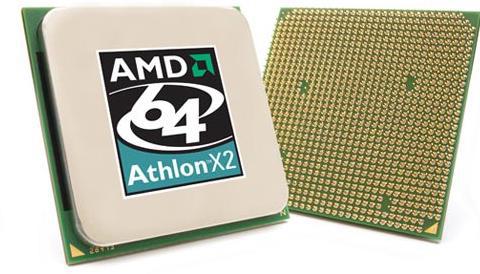Socket AM2 from AMD by the standards of computer technology debuted a long time ago - in 2006. Since then, hardware platforms have been updated repeatedly, but computers based on it can still be found quite often.
Appearance story
In 2006, AMD's two hardware platforms, Socket 754 and Socket 939, exhausted themselves completely and completely. The processors no longer allowed to significantly improve performance, and the RAM subsystem did not allow the use of new, more high-speed modules of the DDR2 format . At the same time, the main competitor represented by Intel did not have such problems. Their platform based on LGA775 successfully developed and allowed both to increase productivity, and it was possible to install more high-speed RAM slots on its motherboards. Therefore, AMD was forced to introduce an updated platform with improved specifications, which was based on Socket AM2. In 2009, AM2 received a minor update, which, according to the manufacturer's specifications, was called AM2 +. The components of these two sockets remained relevant until 2011, when the heir of the processor sockets 2 and 2 + in the person of 3 was introduced .
Platform compatibility
The direct successor, in essence, was for the computing platform Socket AM2-AM3. But there was an intermediate link - AM2 +. The AM2 and AM2 + chips were compatible with each other and could be installed in any such processor socket. But AM3 solutions, besides this socket, could also be used in AM2 +. Physically, the AM3 processor can be installed in the "Socket AM2", but in this case it is necessary to take into account the incompatibility of the memory controllers. AM2 was focused on the use of only DDR2, and AM3 - only DDR3. In turn, AM2 + was equipped with a “hybrid” RAM controller, which could successfully work with both the first and second type of memory.
Processor models
AMD company has released such processors under the "Socket AM2":
Septron solutions were used to create office or budget PCs. Just one block of calculations, a low clock frequency and a minimum cache size did not allow these CPUs to be used for anything more.
Mid-range PCs were based on Athlon solutions . They also had only one code processing unit. But their cache size was larger, and those frequencies were increased. All this allowed at that time to create medium-sized gaming systems.
The premium segment of computer systems within AM2 was occupied by Athlon X2 CPUs . They already had twice the number of code processing blocks, and this allowed to significantly increase their speed.
System Logic Kits
In 2006, AMD did not occupy such a dominant position in the market of chipsets as now. As a result, in most cases, the Socket AM2 motherboard was based on a third-party chipset . This included such well-known companies as NVidia, ATI, SIS and VIA. Since the dominant position in this niche was occupied by the products of the first company for some time, we will focus on it. The list of chipsets of this company for AM2 included the following sets of system logic:
nForce 550. It was the most affordable solution with an integrated graphics subsystem aimed at the office systems market. The perfect chip for them was Septron. Also, the absence of a 16X PCI-E expansion slot did not allow the use of discrete graphics in such PCs.
nForce 570 Ultra. A more advanced set of system logic that allows you to create entry-level gaming systems. Most often, they were coupled with Athlon and Athlon X2 series CPUs . Also, within the framework of such computing systems, it was possible to install one discrete video card.
nForce 570 SLI. Similar motherboards were already equipped with two slots for installing video adapters, and basically they worked in conjunction only with Athlon X2 . The latter could work in SLI mode . Such technical solutions were perfect for creating an average and premium level of gaming system units or even entry-level graphic stations . The mode of operation of the accelerators was PCI-E 2 x 8X.
nForce 590 SLI. This set was practically no different from the previous one. The key difference is the graphics card operating mode, which in this case was PCI-E 2 x 16X. That is why these motherboards are most often found in graphic stations of the middle and higher levels.

Memory subsystem
One of the main innovations was the memory subsystem within the framework of Socket AM2. The processors that were intended to be installed in this socket were equipped with a 2-channel RAM controller, which was aimed only at the use of DDR2 standard modules . Moreover, the working frequencies of the latter could be 400, 533, 667, 800, or even 1066 MHz. The maximum amount of RAM within this computing platform could reach 16 GB.
Integrated Graphics
There were also built-in graphics accelerators as part of a computing platform that was based on Socket AM2. Of course, in current processor solutions, the integrated graphics subsystem is part of the semiconductor chip of the processor device, but at that time there was no such possibility and, as a result, the graphics adapter chips were included in the system logic set. An example of an integrated video card is the Radeon HD3200. Again, the capabilities of such integrated solutions are quite sufficient for the implementation of the simplest tasks (for example, office applications), but they were not at all suitable for building a productive computing system.
Summary
For its time, “ Socket AM2” was revolutionary . It allowed the use of a new type of RAM, and the redesigned microprocessor architecture made it possible to obtain a significant increase in speed. But more than 6 years have passed since its release; it is outdated morally and physically. But the features that were implemented in it, and to this day can be found in the most recent AMD solutions.